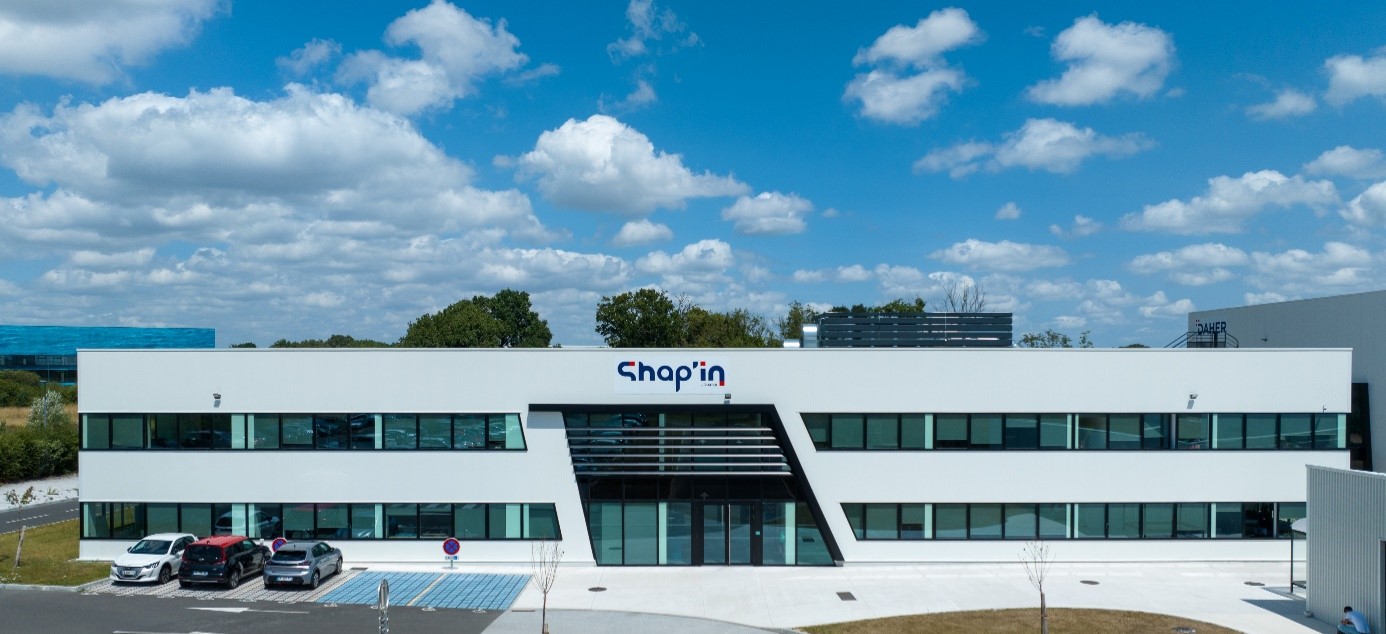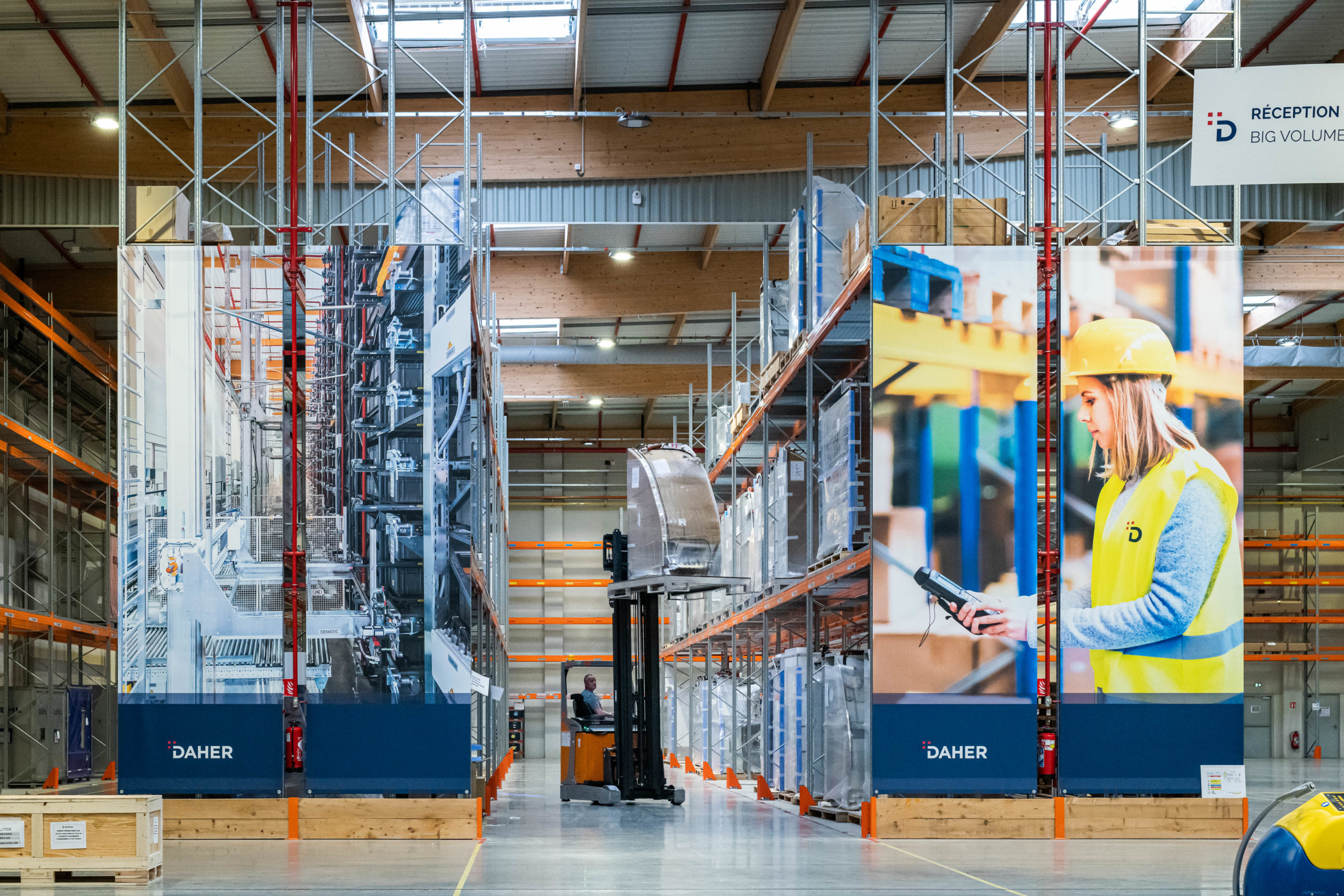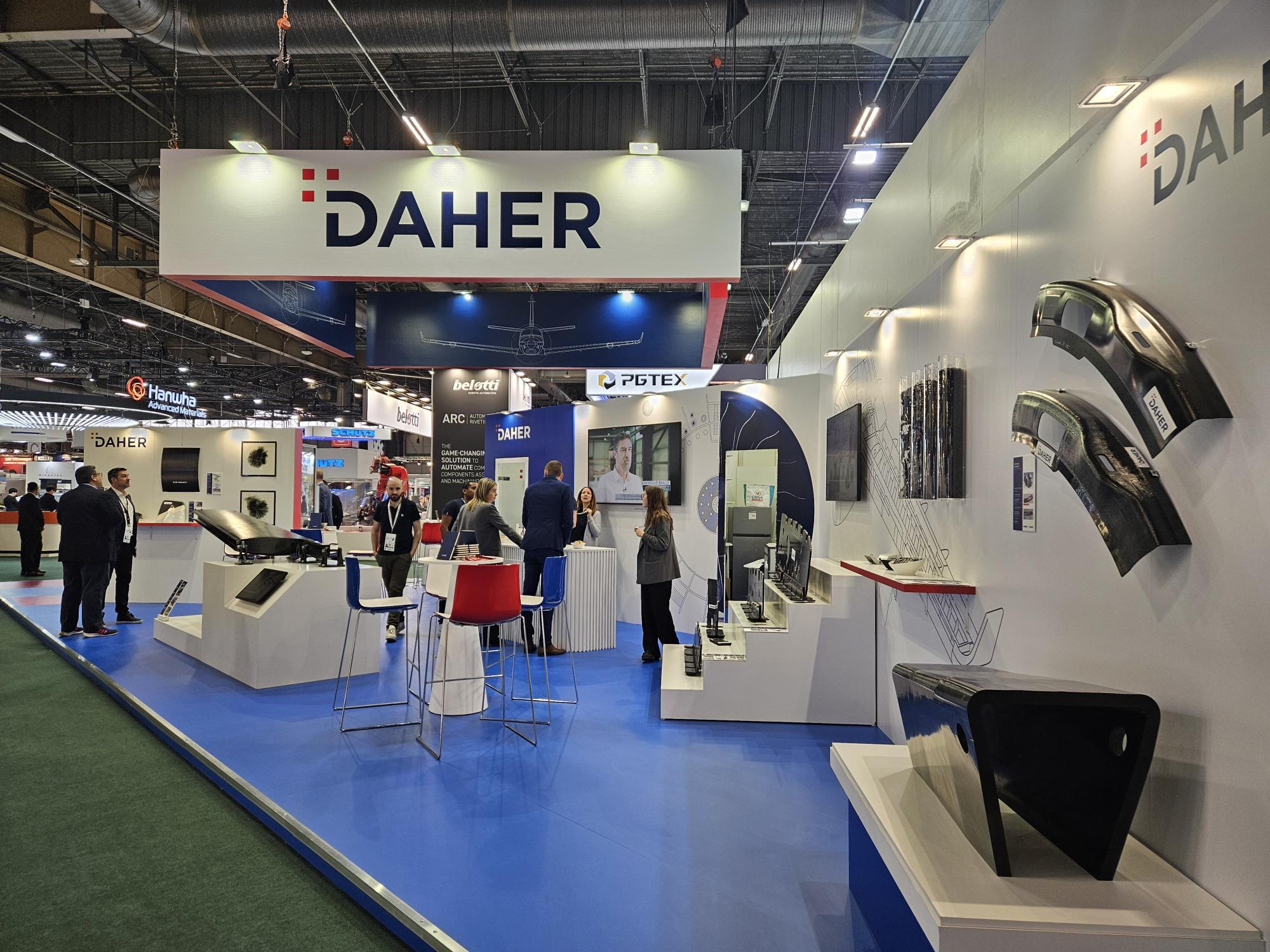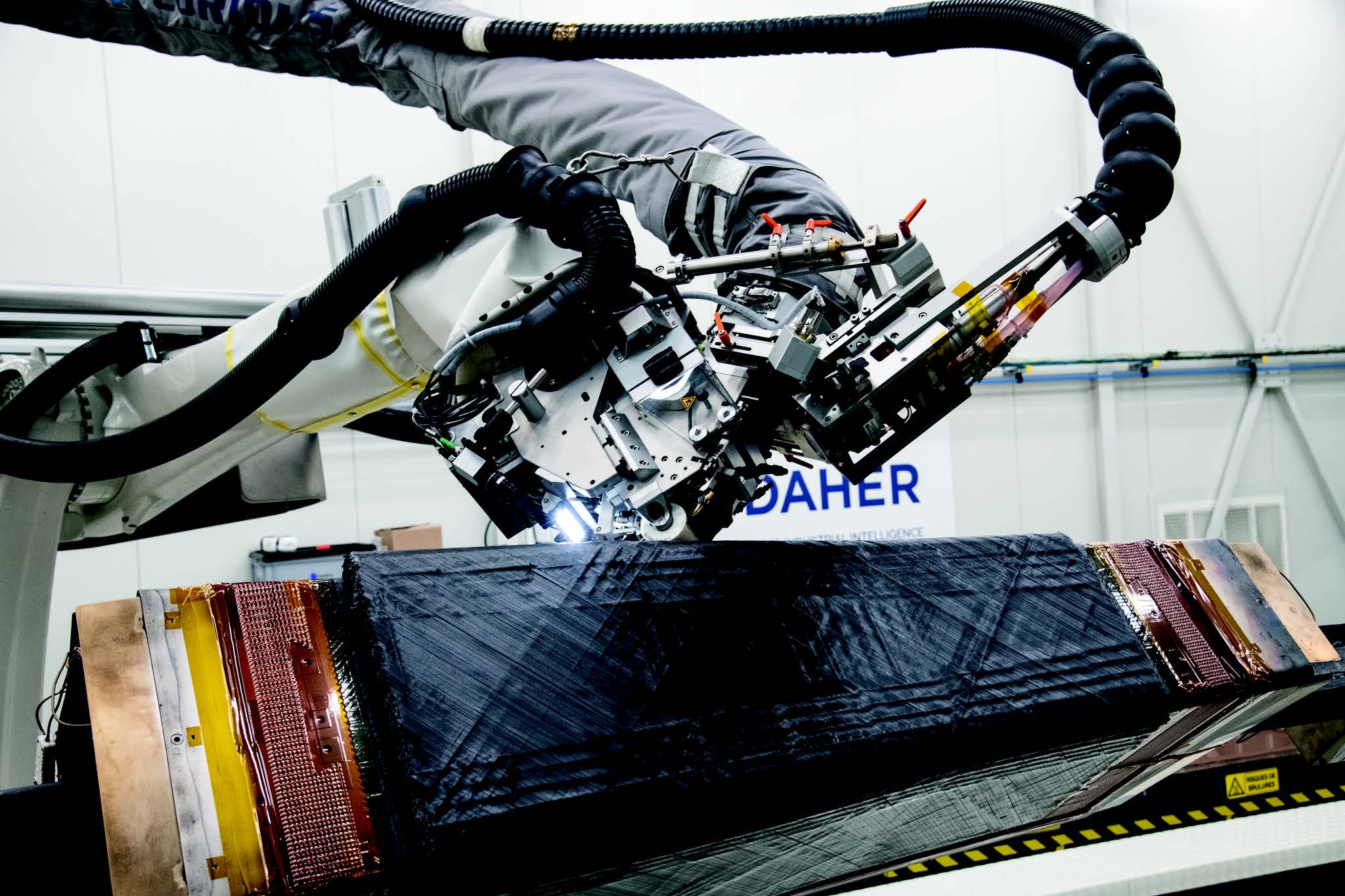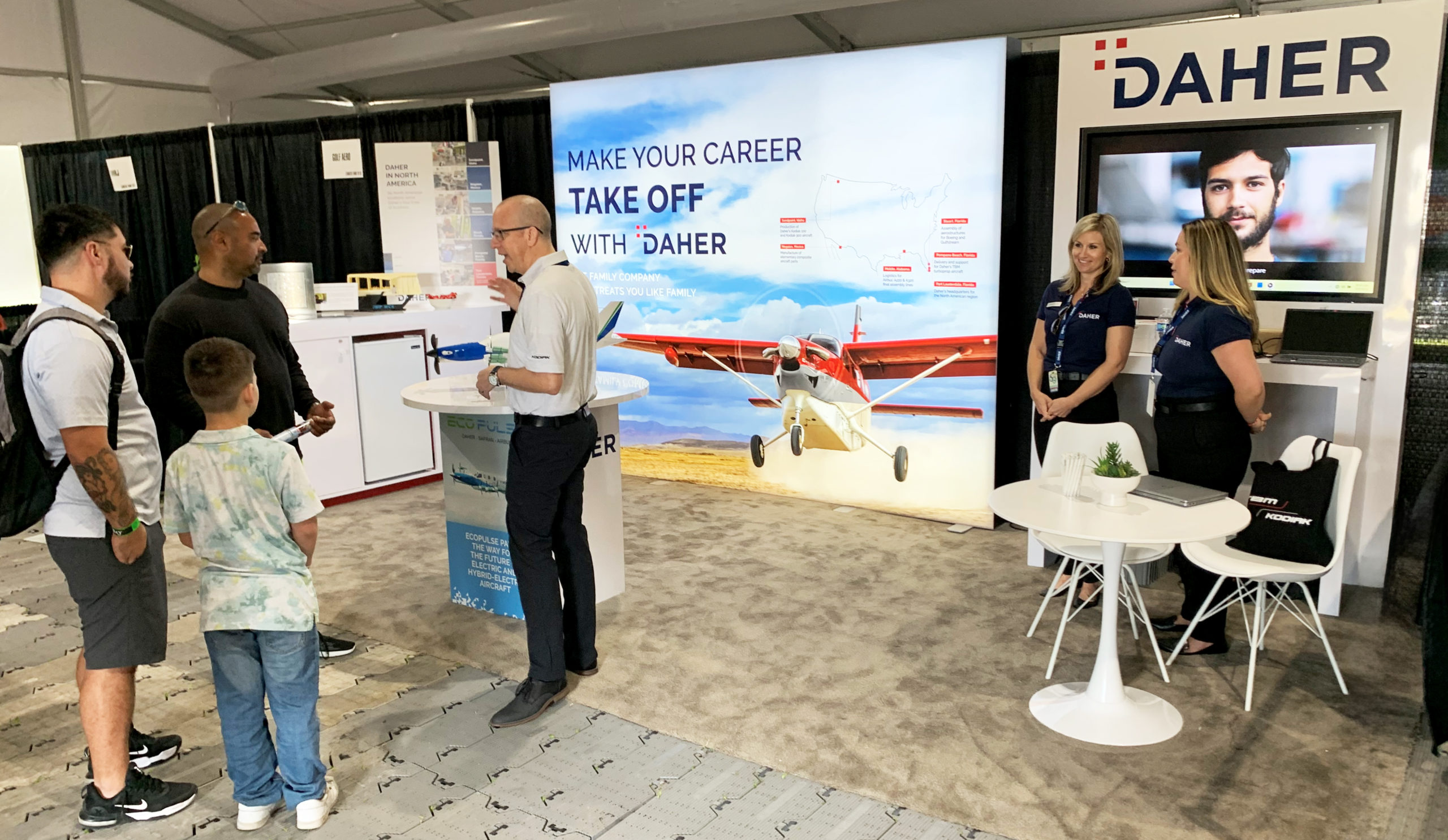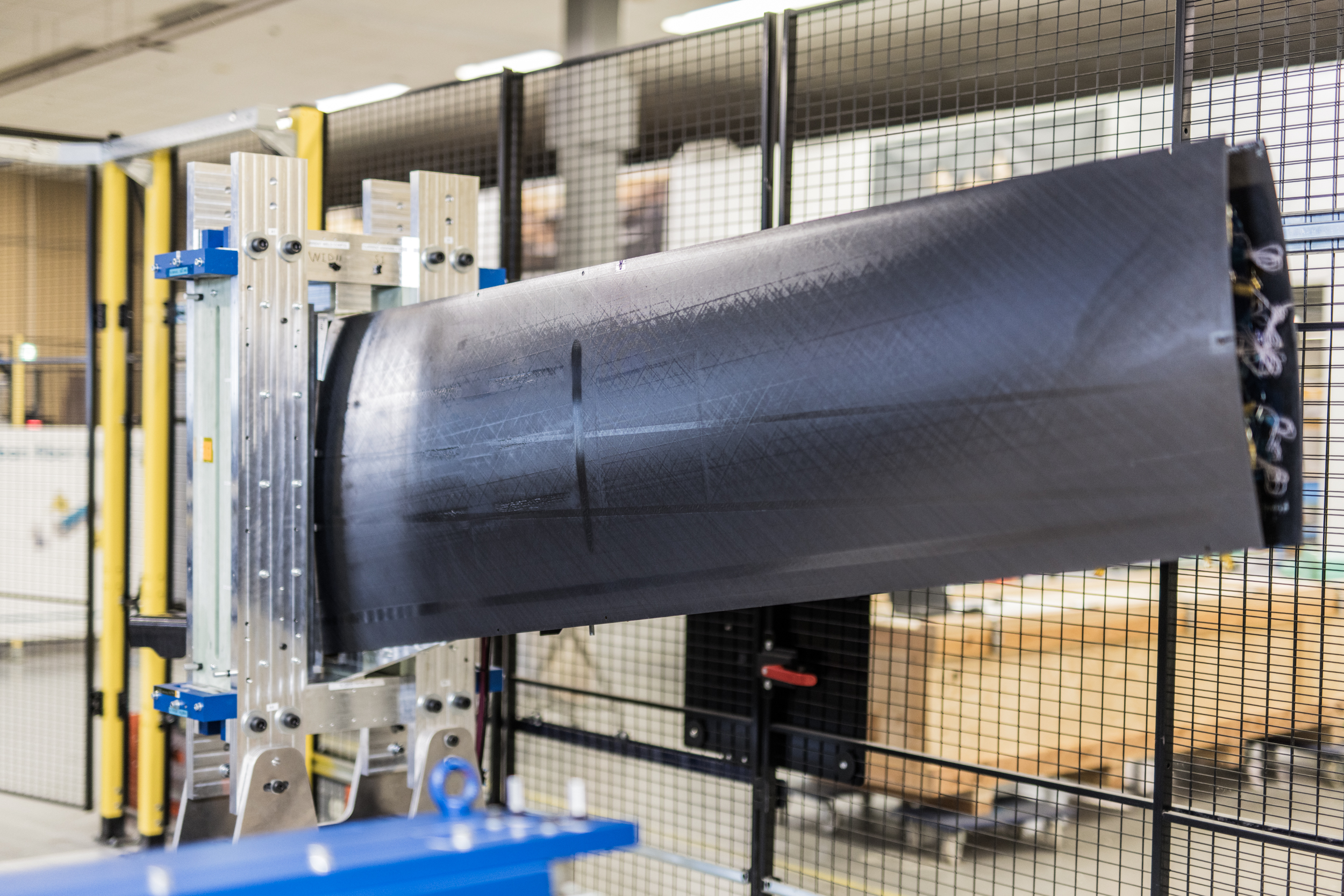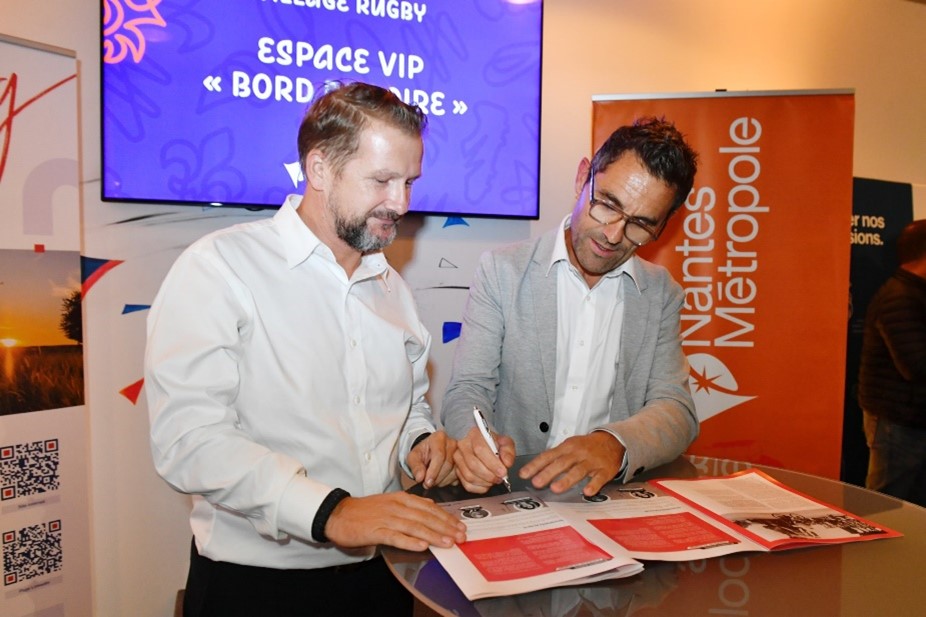At this week’s JEC World 2024 show, Daher is highlighting the company’s advances in aerostructures produced with advanced composites, including a full-scale torsion box demonstrator for aircraft, which was produced using welded thermoplastics.

During JEC World (March 5-7 at the Paris-Nord Villepinte convention center), Daher and its Dutch subsidiary KVE are displaying their latest research and development achievements for the next generation of aircraft.
The centerpiece of their exhibit (Hall 6, Stand C32) is the large torsion box of more than two meters in length, which illustrates the effectiveness of the collaborative approach that Daher has adopted since its 2019 acquisition of KVE – a specialist in induction welding with thermoplastic composites.
A step toward wings of the future
“This full-scale component represents the torsion box for the horizontal stabilizer on Daher-built TBM aircraft,” explained Dominique Bailly, Daher’s R&D Director, who also heads the company’s Shap’in innovation center dedicated to the aerostructures of the future, in Nantes, France. “This demonstrator implements a set of cutting-edge processes – automated fiber placement (AFP), Direct Stamping®, co-consolidation – for manufacturing the aerostructure’s elements, as well as for its assembly that was performed utilizing KVE’s exclusive induction welding process.”
Welding – which eliminates the need for metal rivets traditionally used in assembling aerostructures – is of real benefit in terms of mass, production rates and cost, as well as for recycling. In addition to weight reduction, the elimination of fastening elements saves time during production and assembly – an immediate economic advantage – while welding’s “dust-free” assembly, along with the recyclability of welded subframe assemblies, are aligned with the aeronautical sector’s sustainability goals. Major aircraft manufacturers have clearly confirmed their interest in welding technology for thermoplastic composites.
As a validation of Daher’s technological advances, this full-scale demonstrator prefigures the wing components for tomorrow’s commercial aircraft: lighter, more efficient, and more eco-responsible.
The demonstrator will now undergo a series of tests with the goal of reaching certification by 2027. Its design and development were based on lessons learned from mechanical tests carried out on a reduced-scale demonstrator that was presented during the 2023 JEC World exhibition[1].
Shap’in: Daher’s technology accelerator
The replacement of metal with composite materials – thereby reducing weight – is one of the strong axes of the air transport industry’s decarbonization strategy, and is the purpose of Daher’s Shap’in innovation center dedicated to the aerostructures of tomorrow. Bringing together a concentration of expertise and resources since becoming fully operational in mid-2023, the features of Shap’in include a 1,600-square meter developmental mini-factory for composites.
With this unique resource, Daher’s research and development teams are completely independent – from layup to the finishing of parts. “As an example, we can cover the full cycle for a demonstrator component in record time: from receiving the CAD definition to manufacturing the appropriate molding or machining tools, then producing the parts, carrying out quality control, and delivering the component,” added Bailly.
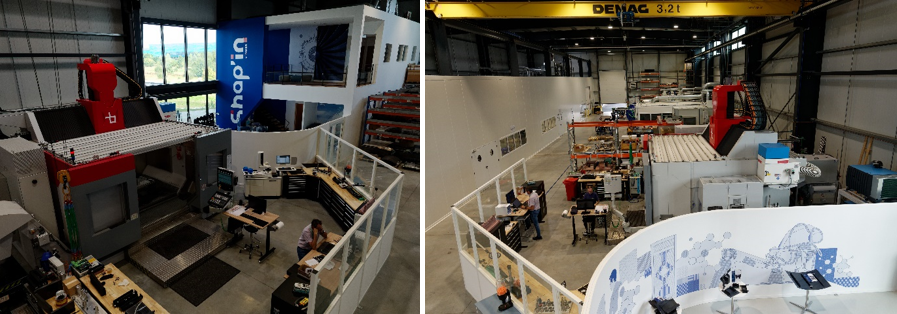
With the Shap’in technical center’s capabilities, Daher intends to accelerate and facilitate the use of innovative advanced materials – thermoplastic composites, first and foremost – in aeronautical programs. The Daher Group’s materials expertise, as illustrated by the CARAC TP R&D project[2], enables it to play an important role with customers, and to be a source of recommendations for the thermoplastic and thermoset composite materials to be used – depending on the application.
Focused for more than 10 years on the wing and engine environment for aircraft, Daher’s technological roadmap will enable the Group to offer mature solutions that respond to the major challenges of decarbonization and attaining production rates for the next generations of commercial aircraft in the 2030-2035 timeframe. The adopted strategy already is bearing fruit on existing programs, as evidenced by another component presented at JEC World 2024: an internal bypass duct (IBD) made of high-temperature resin (BMI carbon), which is complex to produce. This structural part for aircraft engines has been in series production for several years by Daher, and enables significant weight savings on aircraft engines, responding to a major challenge in the aeronautical sector.
The success sums up the company’s ambition to change the dimension in terms of production of composite parts. To achieve this, the Daher Group benefits from a dedicated factory – the largest in Europe devoted to thermoplastic composites, with nearly 300,000 basic parts produced annually, which is located in the immediate vicinity of the Shap’in technical center at Nantes.
“Mass-producing increasingly complex and structural parts by relying on existing know-how and resources, and bringing ever more value to our aircraft and engine manufacturing customers: this is the full value of the Shap’in project, as well as the collaborative approach that we continue to develop,” Bailly concluded.
[1]Visible this year on the VICTREX stand Hall 5, stand C32
[2]More information : CARAC TP helps Daher consolidate its lead in aerospace applications for thermoplastics (daher.com)
Daher at JEC World 2024
Daher/KVE exhibit: Hall 6, Stand C32.
Conferences:
- Stéphanie Patel, Head of Material/Expert, participating in the conference: “Beyond Boundaries: Composite Materials Shaping the Aerospace Industry,” March 6, 2:00 p.m.-2:55 p.m., Agora 6
- Lucas Petry, Industrial Services Talent Acquisition Manager: “Come on board at Daher!” March 6, 2:30 p.m., Campus Village

